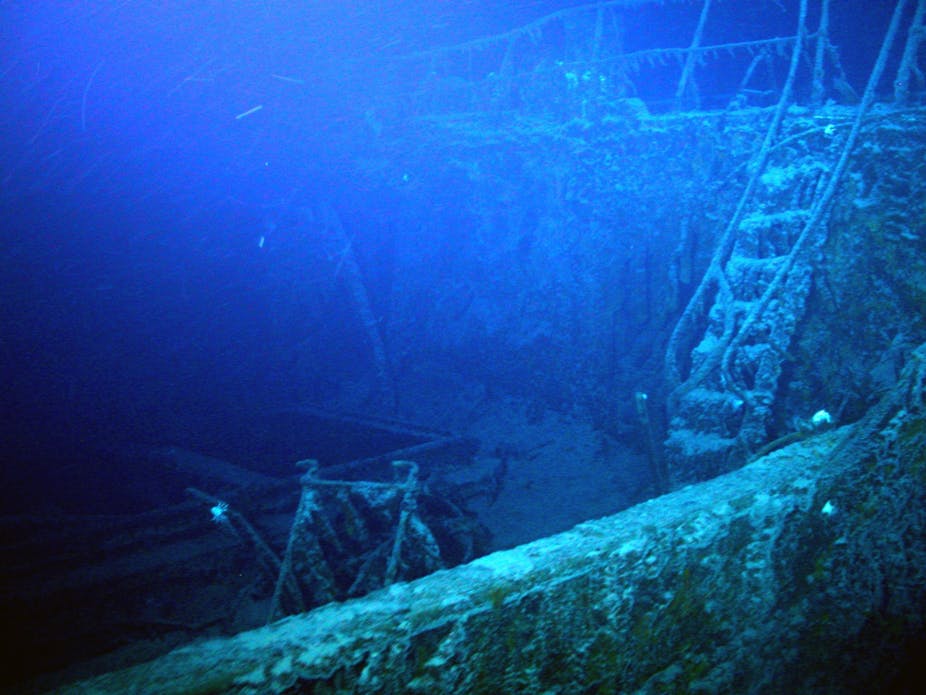BBC News has revealed that a shipwreck containing 200 tonnes of silver has been found in the Atlantic Ocean, 500 kilometres off the west coast of Ireland.
It’s the largest haul of precious metal ever discovered at sea and is believed to be worth approximately $200 million.
The wreck is of the SS Gairsoppa, a UK cargo ship sunk by a German U-boat in 1941, and was found by US “marine archaeology” and exploration company Odyssey Marine Exploration.
But is this really a case of “marine” or “maritime archaeology”? Or is it just treasure hunting?
The 2001 UNESCO Convention on the Protection of the Underwater Cultural Heritage came into force in January 2009 having been ratified by the required 20 countries. As of September 2011, 40 nations have ratified the Convention.

The Convention stresses the need for preservation, management, scientific investigation, and public education of our underwater cultural heritage.
So what do we mean by “underwater cultural heritage”? Well, the 2001 Convention defines it as “all traces of human existence having a historical or archaeological character that have been partially or totally underwater for at least 100 years”.
This includes prehistoric sites, shipwrecks, aircraft, artefacts, human remains, shipyards, jetties, wharves, docks, submerged buildings and towns, together with their archaeological and natural context. Underwater cultural heritage sites can be found in rivers, lakes, springs, bays and, of course, at sea.
Archaeology is the study of past human activities and cultures through the material left behind. Archaeologists are not interested in the artefacts themselves, but rather what those objects and the relationships between them can tell us about the people who made and used them.

Legitimate, professional archaeologists do not engage in the buying, selling, or valuing of artefacts. Contrast this with the attitude of Andrew Craig, senior project manager at Odyssey Marine, who spoke about the find on ABC Radio National Breakfast this morning:
“It’s huge for us … we just can’t wait to get going on it and get it [the silver] up on to the deck of the boat and actually monetise it.”
Recovery of artefacts for commercial exploitation (treasure hunting) is considered unethical and detrimental to maritime archaeology and to humanity as a whole.
Treasure hunters sometimes try to give their endeavours a veneer of respectability by stating they are “using archaeological methods” or are “employing an archaeologist to oversee the project.”
Although their press releases may use the correct archaeological “buzz words,” if artefacts are being recovered for sale, or will end up dispersed into private collections as payment for investing, it is not archaeology, no matter the tools or technology used, or the credentials of the “archaeologist” employed.
Sadly, SS Gairsoppa is not considered “underwater cultural heritage” as defined by the 2001 UNESCO Convention and so it is subject to salvage and treasure hunting by companies such as Odyssey Marine Exploration.
Their work is not maritime archaeology and unfortunately their activities are not restricted to sites that are less than 100 years old.

For example, Odyssey Marine Exploration was last week ordered by a US Federal appeals court to turn over to the Spanish government 17 tonnes of silver coins and other treasure recovered from a sunken Spanish galleon in 2007.
The Nuestra Senora de las Mercedes was sunk by British warships in the Atlantic in 1804 while sailing back from South America.
Spanish lawyers argued that US courts are obligated by international treaty and maritime law to uphold Spain’s claim to the treasure. International treaties generally hold that warships sunk in battle are protected from treasure seekers.
So is this kind of treasure hunting a good investment for companies such as Odyssey Marine Exploration?
Like so many “get-rich-quick” schemes, treasure hunting is not a smart investment. In 2010 Odyssey Marine Exploration posted a net loss of $23.3 million, following a net loss of $18.6 million the previous year. As a result, investors are more than $40 million dollars out of pocket over the past two years alone.

More importantly, treasure hunting is destroying underwater cultural heritage all around the world. In the Asia-Pacific region, for example, treasure hunting on a ninth century Arab shipwreck (the Belitung wreck) in Indonesian waters has been enormously controversial in past months.
The main concern is that by “mining” the wreck commercially over a period of months, much information about the crew and cargo was lost. By taking the time to do a more thorough excavation – a process which can take years – a greater snapshot of the vessel’s crew and cargo could have been created.
The controversy eventually lead the US Smithsonian Institution to cancel a proposed exhibition of material from the Belitung wreck.
There’s certainly a romantic appeal to the idea of discovering millions of dollars of treasure on a long-lost shipwreck, but it’s worth keeping the facts in mind – the people who find such treasures are usually in it for the money alone and care little for the cultural significance of what they find.

